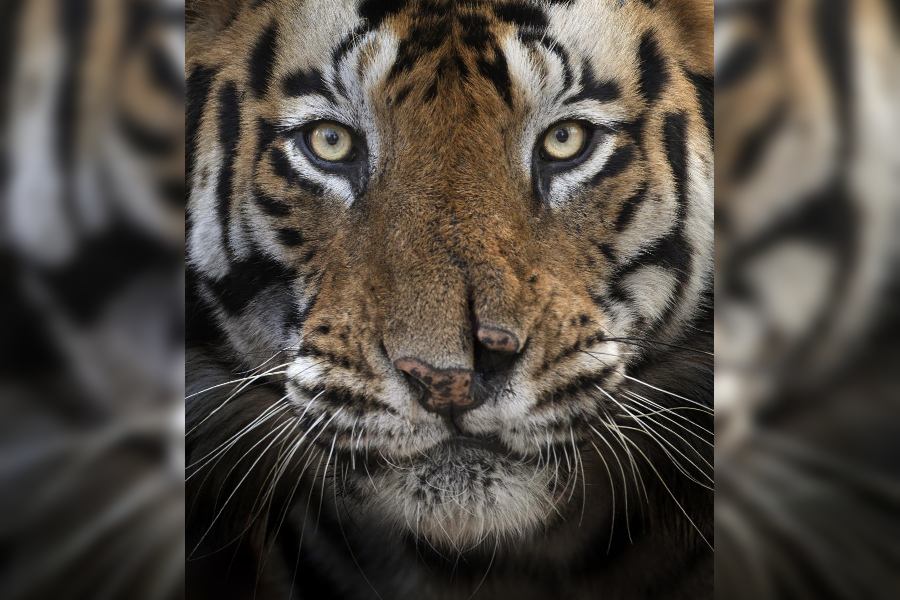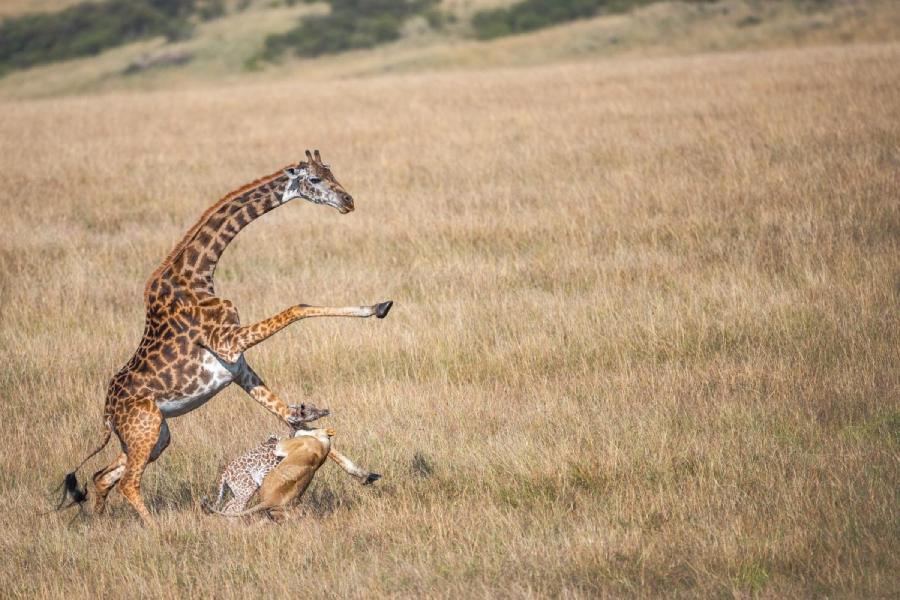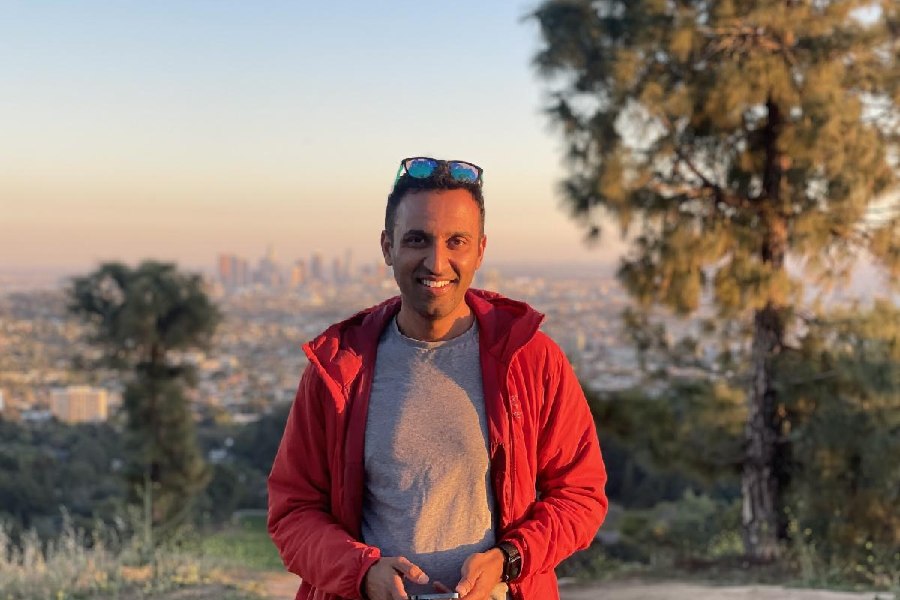The best wildlife photographers fall back on two elements — patience and perseverance. They spend weeks and months waiting for the right moment to capture animals and birds but life is not easy. There is always the issue of expensive equipment, of travelling to remote destinations and heartbreaking moments of seeing the climate crisis up close. When it comes to wildlife photography, Canon doesn’t need an introduction. We had an opportunity to interact with three Canon EOS Ambassadors and here’s what they have to say.
Amoghavarsha JS
Amoghavarsha JS is an award-winning filmmaker and wildlife photographer known for directing the docu-drama Gandhada Gudi. His films have received recognition at the 67th National Film Awards and the Impactdocs Award of Merit. Amoghavarsha served as the art director on Ricky Kej’s Grammy Award-winning album Divine Tides and showcased his work on climate change at the United Nations Climate Change Conference in Paris. He also addressed the United Nations headquarters in 2020 during the screening of his movie Wild Karnataka. What made the Canon EOS Ambassador shift focus from technology to wildlife photography?
Q How did you develop a passion for wildlife photography?

Photograph clicked by Amoghavarsha JS The Telegraph
I was always interested in the outdoors and wanted to explore, just travel and be outdoors. While growing up, we read many books on natural history and Jim Corbett’s books on the forest. That built up a lot of curiosity, and eventually, when I could, I started going out and gradually wildlife and nature became kind of an addiction. The way I was connecting to all of this was through photography and my camera. I think the camera is a brilliant tool for connecting with nature.
Q I believe you were at one point interested in technology. What prompted the shift?
I’ve kind of always been interested in technology. I studied computer science engineering, worked for Amazon, for a start-up, and then, went and built a start-up in San Francisco. I even have two patents to my name. I was fully into technology and loved every bit of it.
But I think when the wildlife and nature bit of my life took off, I had to make a choice. And this was too attractive to not shift into. But even today, I love technology; I code, I understand everything that’s happening in the film-making world. My background in technology helps me to keep up to date with the cameras that we use, especially when the new Canon camera comes or a new piece of equipment comes.
Q You have always been a fan of Canon cameras. Anything in particular that interests you about the brand?
The first camera I ever bought was a Canon 350D; I saved up my first couple of salaries. What I like is the diversity of equipment Canon has in the film range as well, not just (digital) photography. The amount of different lens options at varying specifications, that’s really interesting.
Q What special knowledge and skills does a wildlife photographer need?
A lot of patience and perseverance. In the wild, you don’t dictate anything and whatever happens, you just have to be there and capture it. Nothing is in your control. Without being a good naturalist, somebody who knows about the forest, you really can’t do wildlife photography. To think about what impact wildlife photography can have on conservation, we have to understand that every great change in this world, in some way, has been influenced by a story.
Q Do you think wildlife photography can have a positive impact on conservation?
Thanks to photography, especially in wildlife, so many people care about this topic. Now, how much do we actually see in terms of impact? That’s a different question. But there definitely is an impact. I’ve covered a huge spectrum of positive impacts… in the conservation field. And I think the more I think about it, everything that I have known or started caring about has started with some photograph or maybe something in a film.
There is a great example of this photograph called Earthrise, which is a festival photograph of Earth taken from the moon in which Earth looks like a small marble. That apparently has kickstarted some of the environmental movement because people suddenly said, “Oh, Earth is such a small, tiny marble, and it’s so fragile, so we need to really take care of it.”
Sachin Rai
Sachin Rai is an award-winning professional nature photographer based in Bangalore. He has been photographing wildlife and their threatened habitats for about two decades. Besides birds and mammals, he loves frogs and has helped re-discover a new species of frog in India called Ramanella Anamalaiensis, during one of his expeditions. And he is a proud Canon EOS Maestro.

Wildlife photographer and enthusiast Sachin Rai is a Canon EOS Maestro The Telegraph
Q How did you get into wildlife photography?
Since childhood, I have been very, very interested in wildlife. Anything under the sun would excite me. I was very interested in finding new things, looking for things, and understanding how the ecosystem works and stuff like that. Eventually, I developed an interest in birds, then in frogs, then snakes, then butterflies and spiders, all of these actually did interest me a lot. Eventually, I realised that if I could document them, it would be far more interesting to tell those stories to people. Because then I would have some information about that animal or the subject. And then if I had a lovely picture supporting it, that would be great.
I went about documenting frogs, spiders… interest grew, in documenting stuff, taking close-ups, trying different angles, trying to understand how they live and why they live in the environment they live in. And that gave me the kick to pursue this as a career. But that was almost after seven-eight years of my following it as a passion. So, I started as a passionate wildlife photographer, where I would spend my money, go into the field, try and document things, try and look for things, see things and understand them. The Internet was just coming in. There was not much information online. That is how it began.

Photograph taken by Sachin Rai The Telegraph
Q What are some of the challenges one must expect?
It depends on two things. If you take it up just as a hobby, one has to realise that it’s expensive. The equipment is expensive, and all the places that you want to travel to are expensive. But if you want to take it up as a career, you have to realise that there are not many avenues to make money by selling pictures; you have to realise that there are very few opportunities that can get you monetary benefit through pictures. These are the bigger challenges. Apart from that, nothing much. Our country is blessed with phenomenal places, we have all kinds of habitats, from snow-capped mountains to desert to rainforests to the Deccan Plateau and whatnot. It’s easy for someone who’s interested in wildlife to just go around. Start slow, then spend a lot of time outdoors. You can document anything from a small lizard to a snake to a scorpion and butterfly.
Q What makes your association with Canon special?
My association with Canon goes back a long way. The first camera that I picked up was in 2000; it was a Canon EOS 66, one of the basic SLR models that was there back then. These are film cameras. It’s a brand that I really enjoyed working with. I kept upgrading, kept buying new stuff and it’s been 23 years that I’ve been associated with the brand. When I say associated, I have been using products from the brand. When I became a maestro, I started teaching students about Canon equipment and generally about photography. It’s pretty cool, it’s nice to be associated with a lovely brand like Canon which has absolutely been the flagship in the photography world.
Q Any specific wildlife destination you can return to time and again, and why?
I’m a big fan of walking in the forest. Of feeling the forest, going slow, watching the trees, watching birds, watching butterflies, watching insects that live in the forest, tiny organisms that make the forest, the forest. Arunachal Pradesh is one of my favourites. I enjoy walking in those forests. I like Madagascar a lot because, again, that’s a place where you can walk and explore and find things. You turn a leaf and you see a spider sitting on it.
And macro is a phenomenal world. Macro lenses are like a microscope, whereas telephoto long lenses are like binoculars. Bird photographers use a telephoto lens, which I often use. But when I go to these forests, I take a macro lens where you magnify a tiny subject. So a small one-inch frog will look really big. You can see the details, you can see how the fingertips are, you can see where the nostril is…. You have these exaggerated pictures of these tiny animals when you use a macro, and that is what makes it really stunning. That is my first love.
Q What impact does wildlife photography have on the local community?
Not much, honestly. It completely depends again. If we ask, “Does forests benefit by photography?” Maybe yes, because we are all flag bearers. We are the flag bearers of the wild. We go about telling the stories of the wild. That is how it should be at least because photography is all about storytelling. You go and tell the world why this frog is found only in this landscape and nowhere else on the planet. It is crazy how so many animals live in small populated areas or small areas where the population could be on the decline.
It is unfair to say the locals are the ones who are destroying the forest. They are not. They have been living there for thousands of years. So, if they are living in harmony, if you can tell that story, then that will be phenomenal. You are bridging the gap between the wild and the humans.
Ramachandiran Govindaraj
Ramachandiran Govindaraj, a wildlife photographer based in Coimbatore, is the title winner of the 2020 DJMPC International Photography Contest. The Canon EOS Influencer is known for his photos taken at Kenya’s Maasai Mara National Reserve.

Wildlife photographer Ramachandiran Govindaraj is a Canon EOS Influencer The Telegraph
Q What made you take up wildlife photography?
The love towards elephants started in childhood, So that made me choose wildlife photography. I used to drive with my uncle to the Western Ghats just to see elephants. Eventually, I started photographing them and it took me on a deep dive into wildlife photography.
Q What do Canon cameras offer and what are the lenses you use?
I have been using Canon gear ever since I started photography. I feel Canon offers versatile options when it comes to lenses. Or even where ergonomics are concerned. Currently, I use Canon EOS R5 and R6, with my primary lens EF 400mm F/ 2.8 IS III, which is the latest and the sharpest lens I have ever used. I also use other lenses, like 70-200mm for short focal length and 100mm macro lens for macro photography and 15-35mm for wide angle.

A wild moment captured by Ramachandiran Govindaraj The Telegraph
Q What is the role of wildlife photographers when it comes to encapsulating our planet’s history?
I believe photographing animals in their natural habitat is giving life to the pictures. As a wildlife photographer, I want to convey more such stories to the next generation. Educate them on how to conserve and protect animals and the planet. Wildlife photography creates a lot of awareness among the young generation about animals, habitat loss, global warming, and so on.
Q After the pandemic, do people look at wildlife any differently?
Passion or interest in wildlife has increased significantly after the pandemic. People have started travelling more and visiting national parks. There are a lot of new photographers emerging after the pandemic.
Q What kind of impact do you see global warming have on wildlife?
It is definitely an eye-opener on the global warming aspect. I can see a massive difference in the forest over the past 10 years. The weather is unpredictable and the seasons are not “proper”. For example, unexpected rain or unexpected drought in several areas, which causes a significant impact on travel. Global warming does have a huge impact on wildlife photography.











